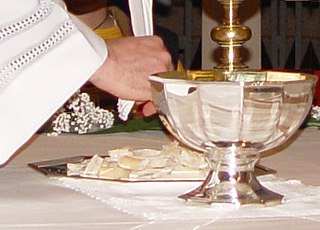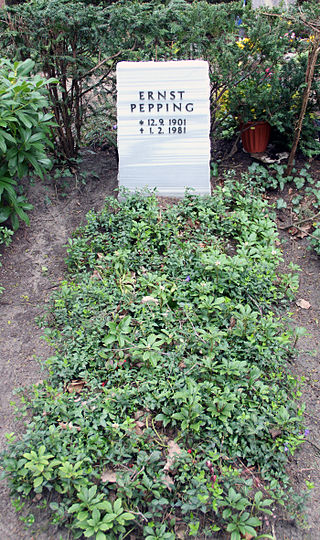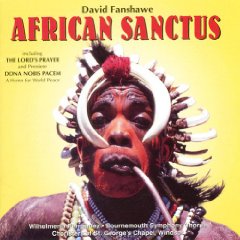Related Research Articles

Agnus Dei is the Latin name under which the "Lamb of God" is honoured within Christian liturgies descending from the historic Latin liturgical tradition, including those of Roman Catholicism, Lutheranism and Anglicanism. It is the name given to a specific prayer that occurs in these liturgies, and is the name given to the music pieces that accompany the text of this prayer.

The 41st Annual Grammy Awards were held on February 24, 1999, at Shrine Auditorium, Los Angeles. They recognized accomplishments by musicians from the year 1998. Lauryn Hill received the most nominations with 10, setting a record for the most nominations for female artist in one night. During the ceremony, Hill became the first woman to receive 5 Grammy Awards in a single night, and the first woman rapper to take home Best New Artist. Her album The Miseducation of Lauryn Hill became the first hip hop album to win the award for Album of the Year. Hill's Grammys sweep is widely considered as one of the biggest moments in hip hop history.

Sir Karl William Pamp Jenkins,, HonFLSW is a Welsh multi-instrumentalist and composer. His best known works include the song "Adiemus", the Adiemus album series; Palladio; The Armed Man; his Requiem and his Stabat Mater (2008).

Sir Stephen John Cleobury was an English organist and music director. He worked with the Choir of King's College, Cambridge, where he served as music director from 1982 to 2019, and with the BBC Singers.
"Carol of the Bells" is a popular Christmas carol, which is based on the Ukrainian New Year's song "Shchedryk." The music for the carol comes from the song written by the Ukrainian composer Mykola Leontovych in 1914; the English-language lyrics were written in 1936 by Peter Wilhousky.

Agnus Dei(Lamb of God) is a choral composition in one movement by Samuel Barber, his own arrangement of his Adagio for Strings (1936). In 1967, he set the Latin words of the liturgical Agnus Dei, a part of the Mass, for mixed chorus with optional organ or piano accompaniment. The music, in B-flat minor, has a duration of about eight minutes.

Gloriæ Dei Cantores is a 40-voice choir based in Orleans, Massachusetts under the direction of artistic director and principal conductor Richard K. Pugsley.

Dona nobis pacem is a cantata written by Ralph Vaughan Williams in 1936 and first performed on 2 October of that year. The work was commissioned to mark the centenary of the Huddersfield Choral Society. Vaughan Williams produced his plea for peace by referring to recent wars during the growing fears of a new one. His texts were taken from the Mass, three poems by Walt Whitman, a political speech, and sections of the Bible. A.V. Butcher has analysed Vaughan Williams' use of the Whitman poems in this composition.

Ernst Pepping was a German composer of classical music and academic teacher. He is regarded as an important composer of Protestant sacred music in the 20th century.

Jeff Johnson is a recording artist, composer and producer who has released numerous solo and collaborative recordings. Born near Portland, Oregon, he currently resides in the San Juan Islands in the state of Washington

Mass of the Children is a major work of English composer John Rutter. It is a non-liturgical Missa brevis, with the traditional Latin and Greek Mass text interwoven with several English poems.
Isak Roux is a South African born German composer born in 1959. He is known for his arrangements of South African music, especially his work with the musical groups Ladysmith Black Mambazo and Kwela Tebza.

African Sanctus is a 1972 choral Mass and is the best-known work of British composer and collector of world musics David Fanshawe.

Songs of Joy and Peace is a Christmas music album by cellist Yo-Yo Ma, released on October 14, 2008. The album won the 2010 Grammy Award for Best Classical Crossover Album. It features collaborations with many other artists, including vocalists Diana Krall & Alison Krauss, bassist John Clayton, pianist Dave Brubeck, cellist Matt Brubeck, clarinetist Paquito D'Rivera, trumpeter Chris Botti, pianist Billy Childs, bassist Robert Hurst, drummer Billy Kilson, and guitarist Romero Lubambo, bassist Edgar Meyer, bassist Nilson Matta, mandolinist Chris Thile, vocalist Renée Fleming, Celtic fiddler Natalie MacMaster, harpist Marta Cook, saxophonist Joshua Redman, piper Cristina Pato, vocalist James Taylor, the Assad Family, ukulele virtuoso Jake Shimabukuro, and Wu Tong & the Silk Road Ensemble.

Windham Hill Records was an independent record label that specialized in instrumental acoustic music. It was founded by guitarist William Ackerman and Anne Robinson in 1976 and was popular in the 1980s and 1990s.

Mass No. 1 in F major, D 105, is a mass composed by Franz Schubert in 1814. It is scored for two soprano soloists, two tenor soloists, alto and bass soloists, SATB choir, oboe, clarinet, bassoon, 2 horns, violin I and II, viola, and basso continuo. It was the first of Schubert's masses to be performed, and is of the missa solemnis type.

Mass No. 6 in E-flat major, D 950, is a mass composed by Franz Schubert, a few months before his death. It is scored for two tenor soloists, soprano, alto and bass soloists, SATB choir with divisi, 2 oboes, 2 clarinets, 2 bassoons, 2 horns, 2 trumpets, 3 trombones, timpani, violin I and II, viola, cello, and double bass. It was Schubert's final setting of the order of Mass, and is classified as a missa solemnis.

Erhard Egidi was a German cantor, organist and composer of sacred music. He was Kantor at the Neustädter Kirche, Hannover, from 1972 to 1991, where he focused on music in church services, but also conducted concerts, with a preference for works of Johann Sebastian Bach and his own teacher Ernst Pepping. He was appointed Kirchenmusikdirektor, responsible for the church music of Hanover.

Salve Regina is a Marian anthem, a setting by Arvo Pärt of the Latin hymn "Salve Regina" for mixed choir and organ in 2001. It was first performed in Essen Cathedral on 22 May 2002. It was published by Universal Edition in 2002. Pärt arranged the composition for choir, celesta and string orchestra in 2011 for a celebration of 150 years of Italian unity.
The Misa Sine Nomine is a 1977 musical work for narrator, mixed choirs with up to 36 voices, organ, and percussion by Leon Schidlowsky. It was composed in memory of Chilean folk singer and human rights activist Víctor Jara. The work is a setting of parts of the mass ordinary juxtaposed with Biblical passages in Hebrew, and texts in other languages by various contemporary authors, including by the composer himself. The composition is in eleven movements and utilizes different groupings of performers in each. The score uses graphic notation. The movements, which can be performed separately, are meant to be accompanied by visual projections. It was first performed in Hamburg in 1980.
References
- ↑ Cohen, Aaron I. (1987). International encyclopedia of women composers (Second edition, revised and enlarged ed.). New York. ISBN 0-9617485-2-4. OCLC 16714846.
{{cite book}}: CS1 maint: location missing publisher (link)